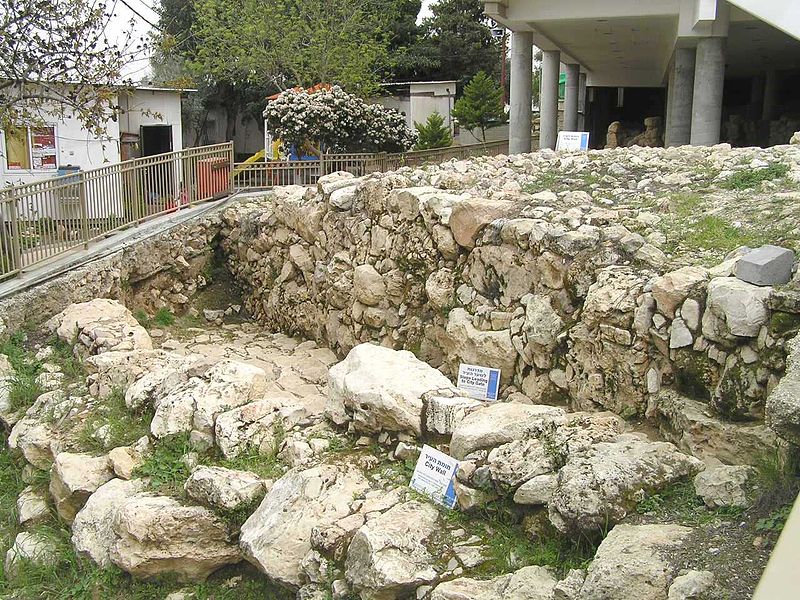6 May. Six ‘cities of refuge’ are set up by the Israelites
“Then the LORD said to Joshua, ‘Tell the Israelites to choose the special cities of safety, as I had Moses command you do. If a person kills someone accidentally and without meaning to kill him, that person may go to a city of safety to hide. There the killer will be safe from the relative who has the duty of punishing a murderer.’”
“’When the killer runs to one of those cities, he must stop at the entrance gate, stand there, and tell the elders of the people what happened. Then that person will be allowed to enter the city and will be given a place to live among them.’”
“’But if the one who is chasing him follows him to that city, the leaders of the city must not hand over the killer. It was an accident. He did not hate him beforehand or kill him on purpose.’”
“’The person must stay in the city until a court comes to a decision and until the high priest dies. Then he may go back to the town from which he ran away.’”
“So the Israelites chose these cities to be cities of safety:
Kedesh in Galilee in the mountains of Naphtali;
Shechem in the mountains of Ephraim;
Kiriath Arba (also called Hebron) in the mountains of Judah;
Bezer on the east side of the Jordan River near Jericho in the desert in the land of Reuben;
Ramoth in Gilead in the land of Gad;
and Golan in Bashan in the land of Manasseh.”
“Any Israelite or anyone living among them who killed someone accidentally was to be allowed to run to one of these cities of safety. There he would not be killed, before he was judged, by the relative who had the duty of punishing a murderer.”
(Joshua 20:1-9)

When the ‘promised land’ of Canaan was divided up amongst the twelve tribes of Israel after the conquest in c.1406BC, the Levites, who served the other tribes by their priestly functions, received no exclusive territory. Instead, they were allocated forty-eight cities and the surrounding grazing lands within the other tribal areas (see Joshua 14:3-4 & 21:1-45).
Six of these cities were also designated as ‘cities of refuge’ to which a man could escape if he killed another person accidentally (see the map on 5 May & Numbers 35:6-15).
The six ‘cities of refuge’ were:
To the west of the River Jordan
Kedesh in Galilee, in the territory of Naphtali
Shechem in the hill country of the tribe of Ephraim
Hebron (Kiriath Arba) in the territory of Judah
To the east of the Jordan (see also Deuteronomy 4:43)
Bezer in the territory of the tribe of Reuben
Ramoth in Gilead, in the territory of Gad
Golan in Bashan, in the territory of Manasseh.
A man who had escaped to one of these ‘cities of refuge’ had to stand trial before the city’s assembly, but wasn’t to be handed over to anyone seeking to avenge the blood of a relative if he had killed his victim unintentionally.
If, however, he was found guilty of intentional (rather than accidental) murder, he would be handed over to the relatives of the man who was then allowed to avenge the blood of his relative by killing the man – on the Old Testament principle of “an eye for an eye and a tooth for a tooth” (see Leviticus 24:17-20 & Deuteronomy 19:21).
In this context of the Law of Moses, Jesus’s command to “love your enemies” was amazingly radical. Jesus said to his Jewish audience, “You have heard that it was said, ‘An eye for an eye, and a tooth for a tooth.’ But I tell you, don’t stand up against an evil person. If someone slaps you on the right cheek, turn to him the other cheek as well… You have heard that it was said, ‘Love your neighbour and hate your enemies.’ But I say to you, love your enemies. Pray for those who hurt you. If you do this, you will be true children of your Father in heaven." (Matthew 5:38-45)
In medieval times, the Old Testament principle of ‘sanctuary’ was adopted by the Christian church, and a murderer (or other criminal) could claim sanctuary inside a church building. Indeed, he had only to knock on the door (and cling onto the ‘sanctuary knocker’) to be safe from those pursuing him. It’s still possible to see sanctuary knockers on the doors of ancient churches such as Holy Trinity Church in Stratford-upon-Avon and Durham Cathedral.
The photo (by Eman) shows archaeological remains from this time at Tel Rumeida in Hebron (Kiriath Arba), one of the six ‘cities of refuge’ established by the Israelites after their conquest of Canaan.
You can read more @ https://www.thebiblejourney.org/biblejourney2/27-the-israelites-move-into-canaan/six-cities-of-refuge-are-set-up/
